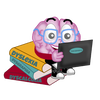Learn how to tailor IEPs for your child's success and maximize their learning potential with the comprehensive test of phonological processingContributed by April Rehrig The CTOPP helps evaluate phonological processing as a prerequisite for reading fluency. This instrument originally published in 1999 was updated in 2013. It’s intended for ages 4:0- 24:11 and takes approximately 40 minutes to complete. Both the CTOPP and the CTOPP-2 are designed to assess phonological awareness, phonological memory, and rapid naming. The CTOPP-2 is commonly used by school psychologists and Speech and Language Therapists for special education assessments. Note, there is no advanced training requirement in the assessment and interpretation of this measure (general and special education teachers may administer this test). There are seven subtests and four composite scores involved in the CTOPP-2. The Phonological Awareness Composite Score represents awareness of and access to the phonological structure of oral language. The Phonological Memory Composite Score represents the ability to code information phonologically for temporary storage in working or short-term memory. The Rapid Symbolic Naming Composite Score measures the efficiency of retrieval of phonological information from long-term or permanent memory and sequencing of operations quickly and repeatedly. The Rapid Non-Symbolic Naming Composite Score is used as an alternative for ages 4-6. It measures the retrieval of phonological information from long-term or permanent memory and sequencing of operations quickly and repeatedly.
Pros: The CTOPP-2 is a fantastic measure at the elementary age for emergent and early readers. It’s commonly used by school psychologists and SLPs throughout schools in the United States and beyond. Its unique focus on decoding, blending and fluency identifies children more effectively than traditional processing tests that more broadly focus on auditory processing. Cons: The CTOPP-2 isn’t recommended for intermediate fluent readers at middle or high school level. Scores with older students tend to be inflated and may not identify true phonological delays for students with intact cognitive reasoning. Students score low on the CTOPP-2 if they struggle with attention deficit and/or visual scanning. Assessors must use a CD during test administration. Many evaluators tend to skip this requirement or don’t have access to CD players, leading to user error and subjective scoring. The bottom line: The CTOPP-2 is a preferred measure to identify phonological deficits for emergent readers. It’s a weak measure for intermediate and advanced readers and overly inflated scores with children who have attention and visual scanning delays. A word about psychometric measures: Standardized tests objectively evaluate one’s potential performance as compared to peers. Standardized tests are NOT aligned with state standards, Common Core, criterion measures (mastery), or classroom grades. They have no bearing on a child’s actual performance, study habits or motivation. Best practice according to the National Association of School Psychologists (NASP) is to cross-validate standardized measures with actual performance such as multiple observations, classroom grades, criterion measures, and most importantly parent input. Recommendations from an assessor should be reviewed and considered by the team at the IEP/eligibility meeting. This means, decisions regarding eligibility and/or related services are made by the team, not the assessor. Want to understand evaluations, fast? Get behind the scenes worksheets, templates, and so much more with Rise Educational Advocacy’s on-demand IEP course. Taught by a veteran school psychologist, Licensed Educational Psychologist, and Board Certified Education Advocate (BCEA). Register now for this unique offer 👉Understanding Reports
0 Comments
Your comment will be posted after it is approved.
Leave a Reply. |
LEXIA LEARNERS LOUNGE
AuthorJess Arce is a homeschool mom of four, a tutor for children & adults who struggle with Dyslexia & Dysgraphia and an all around entrepreneur. She is passionate about helping others understand dyslexia. |
